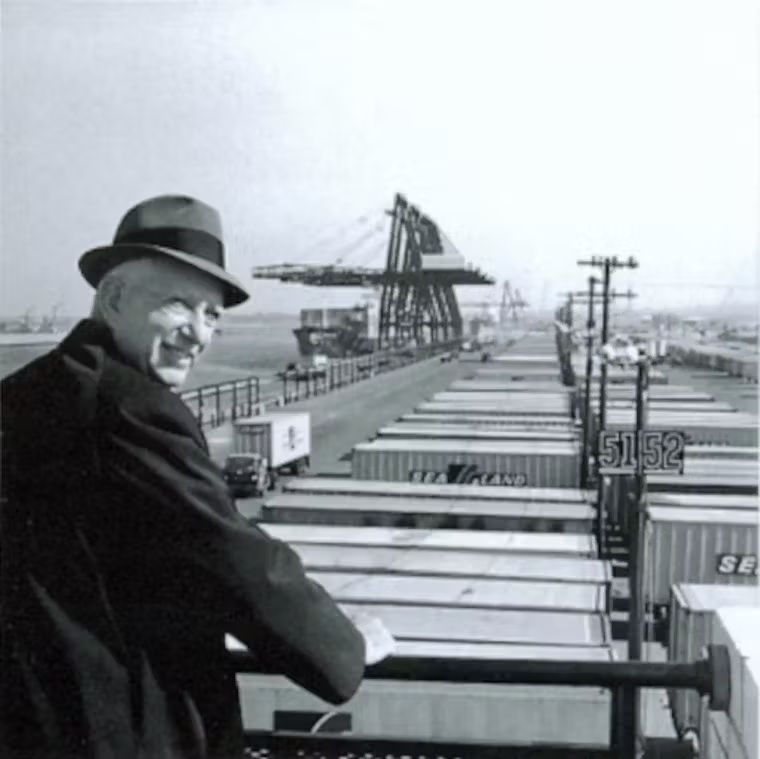SPRING SALE: Receive $100 Off Per Container
This irritated American entrepreneur Malcolm McLean so much that he devised a steel box that revolutionized the traditional general cargo loading and unloading process of that time. McLean thus became the "father" of containerization and was directly responsible for the unprecedented growth of world trade.
It is hard to imagine today, but, until well into the 1960s, the loading and unloading of (seagoing) ships still largely took place manually. Trucks lined up along the quay and the cargo was first placed on the quay and then picked up by dockers and stevedores and stowed in the ship’s hold. A common saying back then was: "Without a good stevedore, the ship might sink". Unloading and loading cargo ships was heavy, labor-intensive work and not without danger.
How one truck driver dramatically changed the way the world trades
Obviously, all of this work took a great deal of time. In fact, it was truck driver Malcom McLean (November 14, 1913 – May 25, 2001) who came up with a very simple solution: load all those loose parts into a steel box, hoist it aboard a ship, and off you go.
The idea came to him just before Thanksgiving in 1937. He was standing in line for hours waiting for his truck, loaded with cotton bales, to be unloaded at a pier in New Jersey. Ultimately, it took him almost 20 years to realize his idea but, during that time, his company, McLean Trucking Company, grew to be one of the largest road transportation companies in the United States.
Even though he had sold his company before it went public on January 6, 1958, he had not abandoned the idea of transporting freight in boxes. McLean used that money to buy the Pan-Atlantic Steamship Company in 1955 before renaming it Sea-Land Service in 1960. Sea-Land (SeaLand), the world's first container shipping company, is now part of Maersk.
On April 23, 1956, the loading of Ideal X, a tanker converted by McLean, began. Using a crane, 58 aluminum "truck bodies" – trailers – were lifted aboard the ship that sailed between Newark and Houston. By the way, history tells us that a few months earlier, Clifford J. Rogers was already shipping containers and not Malcom McLean's Ideal X.
However, it also turned out to be too inefficient to lift an entire trailer and load it on board. The colossus still took up too much space.
The invention of the container
Together with engineer and inventor Keith Tantlinger, McLean designed what is now the standard shipping container. Tantlinger came up with the corner blocks, which made it easy to lift the container, and, for securing it, he designed the twist lock mechanism. This meant that they could be stacked on top of each other like Lego bricks.
But the inventor went a step further, making it the world standard. Tantlinger managed to convince McLean to make the patented design available to the International Organization for Standardization at no cost, thus bringing about major growth in the industry. Thanks to this design, the international standardization of shipping containers was a fact.
Sea-Land's first container-only vessel was the Gateway City, which embarked on its maiden voyage on October 4, 1957, transporting 226 fully loaded containers. The McLean container ship had its own gantry cranes on board to load and unload them. At the end of the 1960s, McLean's container shipping company had 27,000 of its own containers, and 36 container ships, and served approximately 30 ports, including Rotterdam.
However, the strength of the container cannot be separated from infrastructure in logistics that is tailored to its standard requirements: container ships, cranes on the quay, specially adapted trains, trucks, inland vessels, and information and communication technology.


